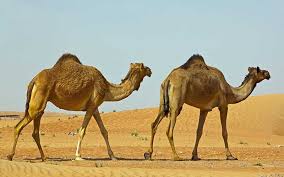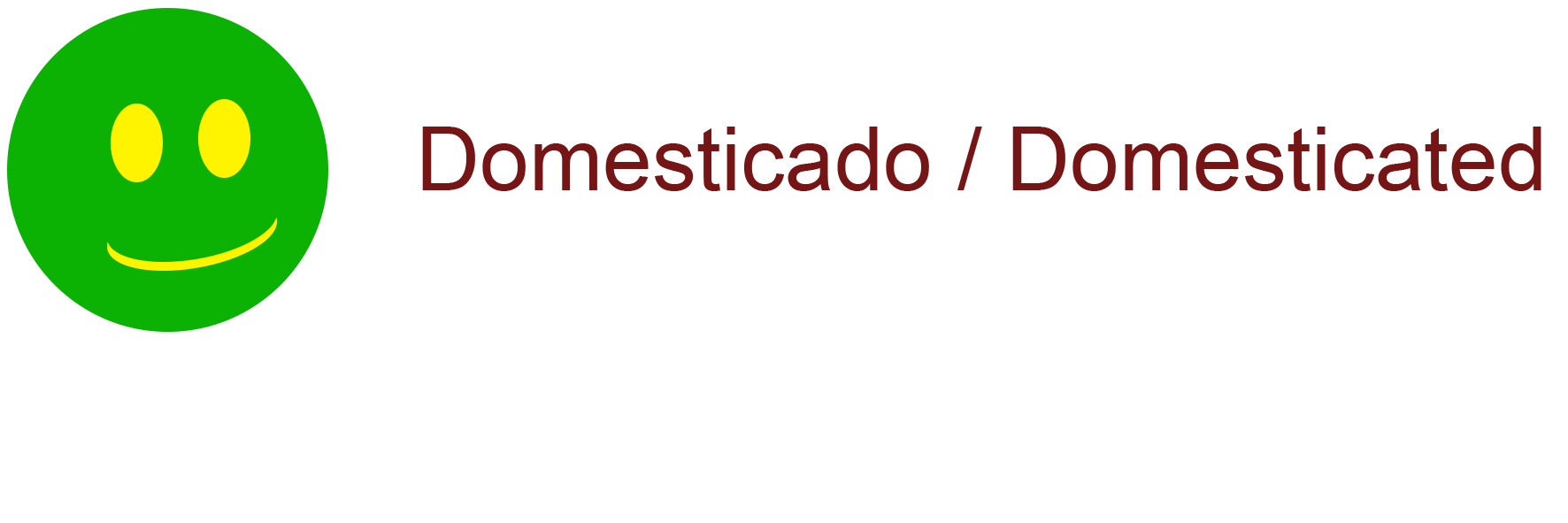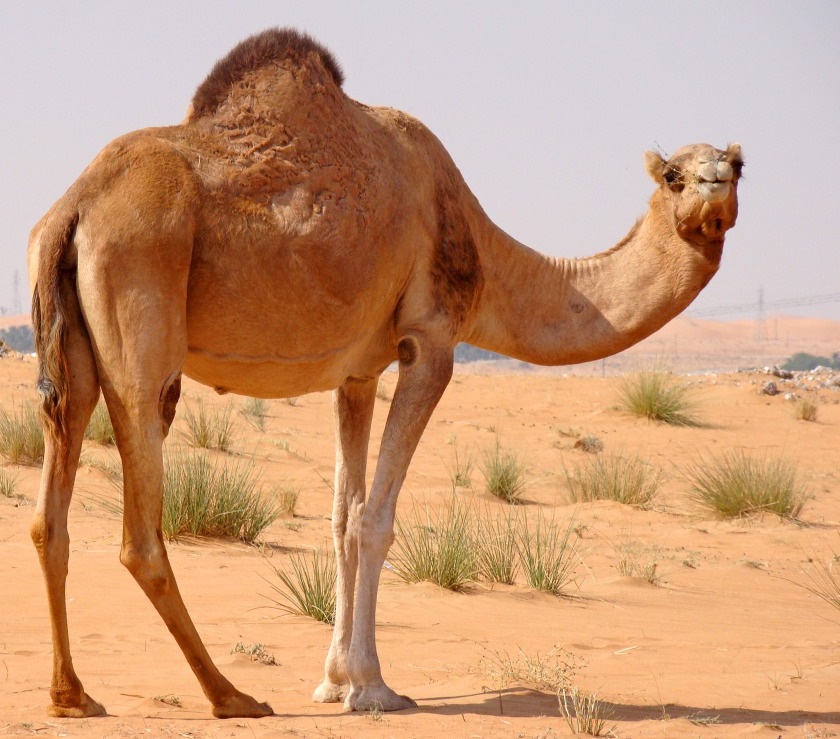The dromedary , also called the Arabian camel (Camelus dromedarius), is a large, even-toed ungulate with one hump on its back. The
dromedary is the tallest of the three species of camel.
Description

Dromedary camels are characterized by a long-curved neck, deep-narrow chest, and a single hump. The hump is composed of fat bound
together by fibrous tissue, acting as food storage in times of need. The size of the hump varies with the nutritional status of the
camel, becoming smaller and leaning to one side during times of starvation. The lips of dromedary camels are thickened to allow
consumption of coarse, thorny plants. Dromedaries are typically caramel brown or sandy brown in color, however, coloration can range
from almost black to nearly white. Hair length is longer on the throat, shoulder, and hump areas. The feet of dromedaries are
pad-shaped and adapted for traveling on sand. They can be easily injured on sharp stones and are unsuitable for slippery or muddy
conditions. Male dromedaries, in comparison to females, are about 10% heavier, weighing 400-600 kg, and are about 10 cm taller at
shoulder height, measuring 1.8-2.0 m. Additionally, male dromedaries have an inflatable soft palate which is used to attract females.
Dromedary camels have a total of 34 teeth.
Dromedary camels have remarkable adaptations for their desert lifestyle. Their eyes are protected from blowing sand and dust by a double
row of eyelashes. Additionally, at the onset of a sandstorm, these camels have the ability to close their nostrils to prevent sand from
entering (Phoenix Zoo 1995). Dromedary camels are able to conserve water in a variety of ways. Water is conserved by the camel's ability
to fluctuate its body temperature throughout the day from 34 degrees Celsius to 41.7 degrees Celsius. This fluctuation in body temperature
allows the camel to conserve water by not sweating as the external temperature rises. Groups of camels also avoid excess heat from the
environment by pressing against each other. Dromedary camels can tolerate greater that 30% water loss, a condition which is lethal for most
other mammals at 15%. Water is expended primarily from interstitial and intracellular bodily fluids. Furthermore, dromedary camels can
rehydrate quickly, being capable of drinking 100 L of water in just 10 minutes, a feat which would be lethal to any other mammals.
Geographic Range
Dromedary camels occupy arid regions of the Middle East through northern India and arid regions in Africa, most notably, the
Sahara Desert. They have also been introduced to arid regions of central Australia where some of the only feral populations now
persist. The original range of their wild ancestors was probably south Asia and the Arabian peninsula.
Habitat
Dromedary camels prefer desert conditions characterized by a long dry season and a short rainy season. Introduction of dromedary
camels into other climates has proven unsuccessful as they are sensitive to cold and humidity.
Reproduction
During competition for females, males threaten each other by making low noises with the fleshy fold of their mouths, stand as tall
as possible, and repeat a series of head movements including lowering, lifting, and bending their necks backwards. Upon
confrontation, fighting males attempt to bring their opponent to the ground by biting at his legs and taking the opponent's head in
between his jaws. Copulation time ranges from 7-35 minutes, averaging 11-15 minutes.
Females reach sexual maturity around age 3 and mate around age 4 or 5. Males begin to rut by age 3, but do not reach full sexual
maturity until age 6. Typically, males and females are seasonal breeders. Breeding occurs in winter and overlaps with the rainy
season; both vary in respect to the camel's geographic range. The onset of the breeding season is believed to be cued by
nutritional status of the camel and the daylength. The gestation period typically lasts for a period of 15 months, followed by the
birth of a single calf.
Lifespan/Longevity
Dromedary camels have a lifespan of about 40-50 years.








